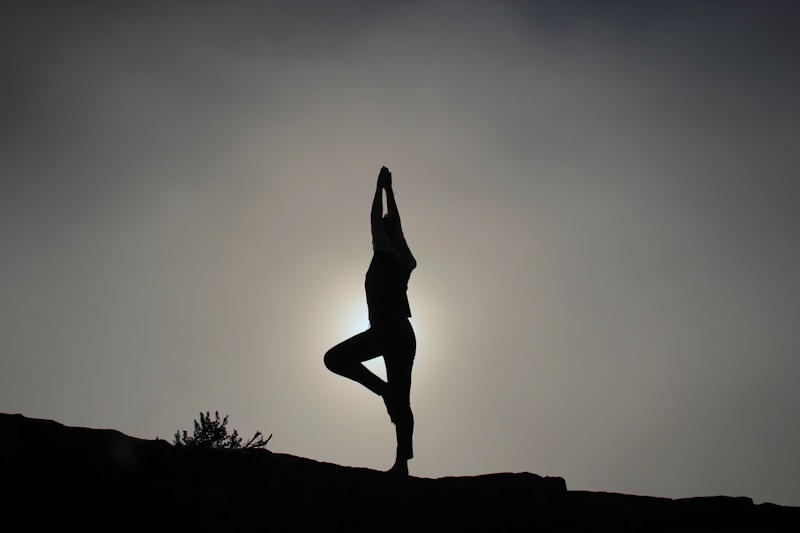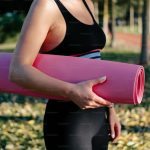Last year, the Daily Mail claimed that menopause makes life a misery for a quarter of women and that 20% of women have taken time off work due to the symptoms of menopause.
Your doctor can prescribe Hormone Replacement Therapy (HRT), but with concerns about this treatment being raised over the last decade or so, it’d be nice to know of any alternative options. Have you thought of yoga to ease those nasty symptoms that menopause promises women as they move into the autumn of their lives? No? Well, think again!
The Monster Of Menopause
There’s no getting away from the fact that unless we die young or are a man we will, one day, go through menopause. For some women it comes early after chemotherapy or surgery to remove both ovaries or the womb. For others it happens as we transition through middle age somewhere between 40 and 60 (the average age of onset on the menopause is apparently 51). 80% of us will get hot flushes and night sweats with many more suffering from a range of symptoms including muscle aches, tiredness, depression, anxiety, weight gain and loss of libido.
A large US multi-ethnic study recently concluded that these symptoms will last between 3.4 and 11.8 years (average 7.4 years) which is not exactly comforting for those of us on the cusp, or in throes, of menopause! Here are a few ways yoga can help us through…
1. Āsana for anxiety
There is no denying that, for many women, menopause is a time of high stress and anxiety that yoga has been proven to help with. A recent academic review of five randomised controlled trials (RCTs) looking at how yoga can help with menopausal symptoms found that:
This systematic review found moderate evidence for short-term effectiveness of yoga for psychological symptom relief in menopausal women.
Good news, then, that the research says that yoga helps women to manage the stress, anxiety and depression that so many report during the menopause. Even the NHS recommends yoga for mood swings during menopause.
2. Flows for hot flushes
Obesity and high body fat have been shown to be risk factors for hot flushes and night sweats with increased physical activity bringing a higher quality of life than inactivity. It doesn’t take a rocket scientist to work out that yoga can be physically active (I’m thinking vinyāsa flow and ashtanga vinyāsa styles) and certainly does help to shed those excess pounds.
One 2014 study found improvements in a range of menopausal symptoms studied and stated that hot flushes and night sweats improved following a programme of āsana (yoga poses), prānāyāma (breathing exercises), śavāsana (relaxation) and dhyāna (meditation). Another found that subjects reported a 66% improvement in hot flushes following 10 weeks of weekly 90 minute yoga classes compared to 36% in an inactive control group!
3. Iyengar for insomnia
Difficulty sleeping, in general or due to hot flushes, is another unpleasant feature of the menopause. Two independent studies have shown significant improvements in sleep when comparing yoga to passive stretching and yoga to exercise or a control group. So, yoga can help you sleep like a baby once more and I certainly find that the day is so much easier to deal with after a good night’s sleep, whatever my hormones may throw at me.
4. Yoga gives that feel-good feeling
Most studies agree that menopause often brings problems with some women reporting that they struggle to cope with their everyday lives. Thankfully, not everyone suffers that badly, but a general reduction in quality of life seems to be a recurring feature of this period in a woman’s life.
As already mentioned above, physically active women report higher quality of life scores than inactive ones and another study comparing yoga, aerobic exercise (like running) and Omega-3 supplements found that “among healthy sedentary menopausal women, yoga appears to improve menopausal quality of life.“
This is great news at a time when some of us are bowing out of high-impact activities (like running) after the joint damage that it can bring. Yoga would seem to be better for us at this time of life since, as well as being more comfortable, it protects our joints from further abuse. From a personal perspective, I gave up running about two years ago due to knee pain and started doing yoga instead. Not only has my knee pain cleared up but I am stronger, more flexible and better toned than I ever was in my running days.
Putting It Into Practice
If you are already practicing yoga then the research seems to suggest that the menopausal yogi should continue coming to their mat. Though not all of the studies detailed how much or how often their subjects practiced, those that did advocated a weekly class and daily practice. Maybe you could tray a few sun salutes in your lounge on the days you don’t go to a class. Or try replacing a run with yoga class to gain the extra benefits that āsana brings during the menopause.
If you’ve not tried yoga but are now tempted to give it a try then I recommend looking for a beginners class in your area to help you start your yoga journey safely. If you’re just starting out, I’d suggest trying a less dynamic style like Iyengar, Vinyasa Flow or Hatha Yoga. Since overheating is a feature of the menopause, Bikram or hot yoga might not suit either as these are performed in a studio heated to over 100°F (or 40°C).
Whatever you choose to do — rest assured that your practice is helping to ease the psychological, physical and emotional symptoms of your menopause while getting you fitter, stronger and more flexible. What is there not to love about that? So roll out your mat, menopausal yogis, and keep me posted about how you get on holding those nasty symptoms at bay.













